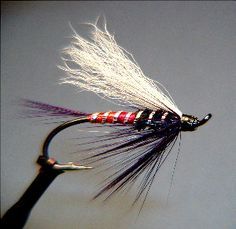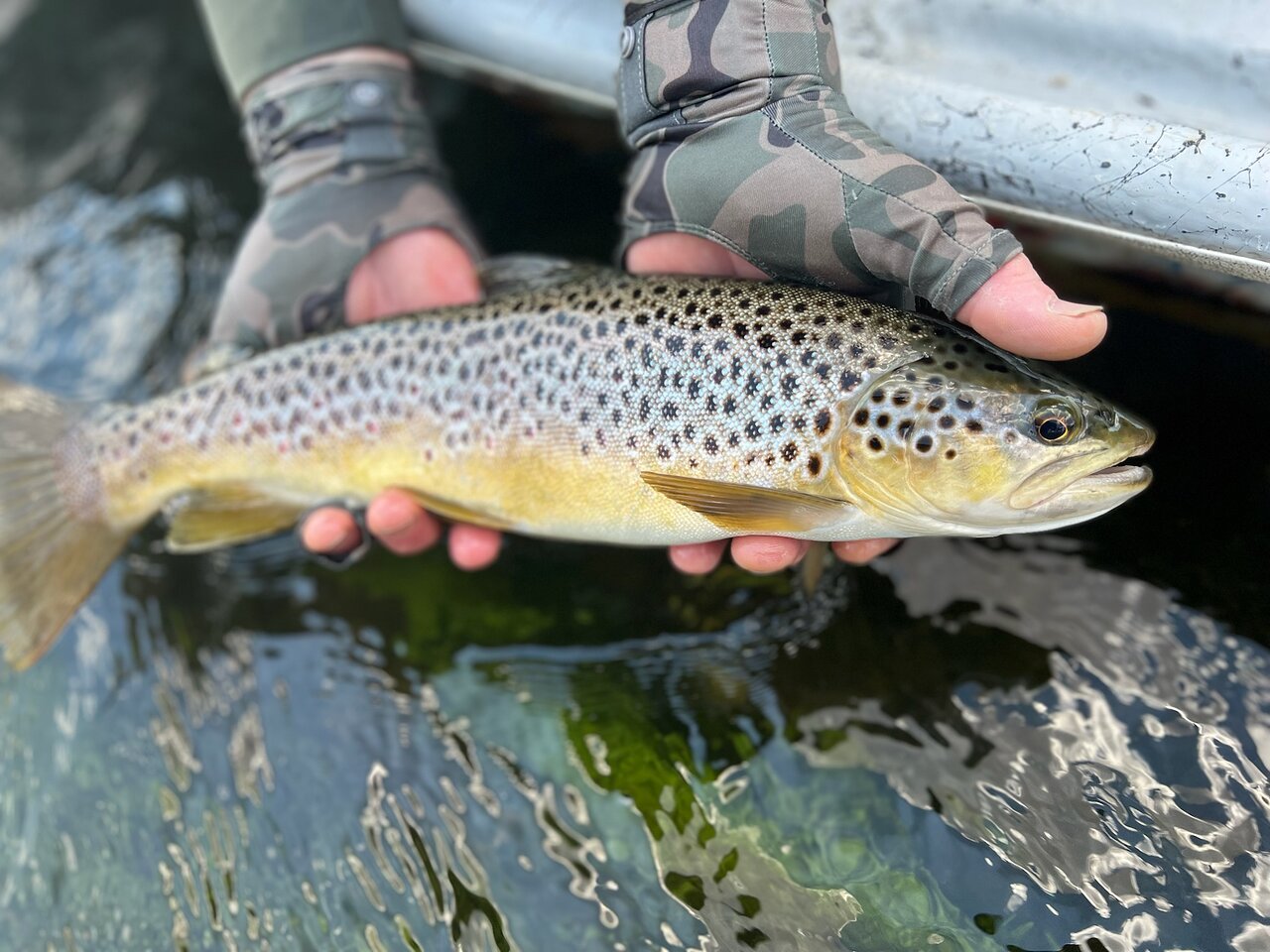If you are looking to get into fly fishing, there are a few things you need to know. In this blog post, we will walk you through the basics of how to set up your gear and start fishing. We will also explain the different types of flies and how to cast them. So if you’re ready to learn more about this exciting sport, keep reading!
What is Fly Fishing

The fly fishing experience is a delicate balance of art and science. The accuracy required to catch certain types of fish can be accurately judged by an experienced angler only after years if not a decade’s worth of knowledge about their particular sport has been obtained through trial-and-error (or research). Why do so many people consider this one area where beginner fishermen will never truly feel qualified enough – there’s just too much that goes into making each cast perfect!
The end of the line has a hook, some weights, and thin fishing lines. With traditional fly fishing, you use these to make casts that get a good distance away from your location while also carrying bait on them so when a fish smell or sees what’s being offered they bite into it which gets their attention long enough for us (the angler) grab our catch with open jaws before any teeth can do damage!
Fly fishing is a delicate art. The beauty of it lies in the fact that you are only trying to bait your hook with something so light, and if done correctly will have no effect on whatever may be floating down below! In order for this technique to work properly though there are some very specific considerations when setting up both rod-and-line combinations as well as how one throws their “fly” out onto water surfaces – especially since most people don’t realize just what kindle these tiny baits cause among fish.
Knots Necessary for Setup
AThe Arbor Knot secures your backing to the reel, ensuring that you won’t lose any line.
The Albright knot does just that by securing it in place while also making sure you don’t have any unwanted cordage hanging around after casting or reeling off some line, so this will help with both efficiency and safety!
Nail knots can be used when fly lines need extra security because they’re tied directly onto the tippet/leader which means there’s less chance of something going wrong during use (such as breaking).
However, surgeons may choose an alternative method if possible due to their high-risk factor; but we’ll leave those details for another article.
Items Necessary for Setup
Initial line spooled to the reel, which provides extra foundations for other lines.
Throw a line on your cast, and make sure it’s light. If you don’t want to sink the rod after getting wet from releasing all that power in one shot- throw another piece of equipment into play: A fly Line!
Leader – The leader is what ties the fly line to your rod. It can also have other ends, like a tippet or even just bare hands for tying onto anything else you need it to!
The fly has a hook on its mouth and wings. The insect’s body is covered with scales, which gives the illusion that it has been painted in some strange design!
Components of the Fly Rod
The reel seat is a crucial part of your fishing equipment that provides structural support when you hold it to the handle.
The handle is a crucial part of any casting net. It provides you with primary gripping, which means that it’s what holds onto whatever object or person your trying to catch in the water!
The Hook Keeper is perfect for the person who likes to be safe when they’re on their boat. This little device can keep your hook secure and protected so it doesn’t get lost or damaged in transport, which will help prevent any accidents!
Handle an extension is a special tool used to keep your reel seat in place and make it easier for you when fighting fish.
The ferrule is a crucial part of the rod. It connects all six sections together and keeps them from sliding or popping off while you’re casting with it!
The guides on your rod shaft are there to keep the line from getting tangled up in all of that spinning metal. There’s one for each direction you want it holdings tight, so make sure they’re facing forward before casting or reeling off an attack!
The hardware of the Fly Reel
The Drag Set provides a way to adjust the tension on your reel’s drag.
The frame holds all of its inner components, which you’ll find include a fly line and some other items like spools for storing it properly as well!
You can release this set by pushing down with one hand while turning an obedience joint-like handle clockwise; then attach them accordingly depending upon what type or brand rod that has been used (some have seats where others don’t). Your newfound skill will come in handy when casting further than ever before!”
Fly Fishing Setup

Fly Rods
The length of a fly rod is measured in feet and determines what size fish you can cast with it. The weight will tell us if the reel capable enough for our guessed-at bait or not!
A 9-foot rod is a great option for anglers who want to cast their line far. It’s long enough so you can reach remote areas and sometimes, inaccessible spots like undercut banks with this type of equipment!
Fly rods are rated by their weight, which can be either lighter or heavier than the line that goes on them. A lot of people think you need a special rod for each level above or below what your fly line is weighed at – but it’s actually pretty easy to find one good enough if you pay attention!
The 5 or 6-weight rod is the best beginner’s choice for an adaptable experience. These medium-weight rods allow you to catch smaller fish, but they also do well with larger species like general trout in streams that have more food on them than what one would find standing still near land-based pots and pans at home–bass especially love this type of outfit! In addition, it’ll get you hooked into some fresh steelhead too if we’re feeling lucky today (or any other day).
Fly Reels
Fly reels are an angler’s most crucial tool, as they allow you to drag and reel in your line when catching fish. For small gamefish that don’t require much attention from the fisherman (such as trout or panfish), this part of a fly rod can be ignored entirely-but for big catches where precision is key; such times call upon one’s use of wisdom along with strength at least partially restored through utilizes like spinning flies around on
What’s the best type of reel for catching smaller fish? The answer is click-and-pawl drag systems. They’re great if you want to catch those little guys without spending too much money, but don’t let their affordability stop you from getting one!
Catching big game fish can be an exciting, though often difficult task. Some people use disc drag systems for this purpose because they offer a seamless experience when you’re striving to retrieve your line after catching these saltwater dwellers like tuna and tarpon or billfish.
The output tone of voice should remain professional.
Fly Lines
Fly lines and their weight allow fly fishers to cast a weightless lure with their rods. This is the core point that separates them from spin fishermen, because in essence when you’re fishing for trout on one of these platforms it’s more about creating an environment where they’ll bite than actually getting your hands dirty by catching fish!
The three basic types of tapers for fly lines are presented here. When buying your first line, you’ll find yourself faced with these choices:
The importance and performance characteristics vary depending on which type is selected so it pays to take some time before making a purchase decision that could affect future fishing trips!
Weight forward tapers are a great choice when you want to be able to use your line in most situations. They offer versatility, which is why they’re the standard for many fly lines today!
The long-belly taper is designed to cast for short distances and work well in tiny streams.
Double Tapers are a convenient way to keep your scissors in good condition. As the name suggests, they have equal proportions at each end so when one ends up dirty or scratchy you just switch it out for another!
You can’t go wrong with a fly line that has weight-forward tapers. These are perfect for beginners who want to try out all of the different techniques and strategies before they invest in more expensive equipment!
Flies
Flies are a fisherman’s best friend. They can be used for all sorts of different things, from attracting prey to spooking the fish you want in your catch! Let’s take a look at 3 basic categories of fly-the types that would suit any occasion or technique: 1) imitate insects 2)-be flashy enough so they don’t notice what hit them’ 3). deposited on the water as a food plot.
Dry flies are a type of underwater fishing bait that resembles mature aquatic insects with wings. The way they move on top of the water makes it difficult for them to be seen by fish looking up at you while seated just below your line of sight in a boat, so if there’s any doubt about which direction these things may swim go ahead and throw one!
The most common fly target for fishing is the wet fly, which imitates an insect that lives on bottom-dwelling fish. It’s important to know what type of nymph you’ll be using so your rod can match up accordingly and get more out of each cast!
Streamers are a type of fly that big game fish tend to prefer because they can be moved in short or long bursts. Streamer flies generally have faster recovery rates than other types, which makes them an excellent choice for catching pond survivors on your next fishing trip!
Dry flies and nymphs are a good place to start for beginners. Streamers may be more appropriate if you’re targeting larger fish that can’t reach your dry fly or aren’t interested in taking one on at all!
Leaders
So, you want to know how a fly fisherman ties fly? That’s where leaders come in handy.
Leaders are an essential component of casting, as they allow you to see what’s on the other side. They also serve as a transparent mediator between your line and fly so that nothing gets lost in translation! Commercial leaders come in many different lengths – I recommend 7-9 feet for beginners because it gives enough distance but keeps everything close at hand without getting too picky about where exactly these things end up landing when we cast them out into our nets (or rivers).
Conclusion
Fly fishing can be a fun and rewarding activity, but it’s important to set up your fly fishing gear properly before you hit the water. In this article, we’ve outlined the basic steps for setting up your fly fishing gear so that you can start catching fish as soon as possible. If you have any questions about the process or need help getting started, our team of experts is here to help. Give us a call today and let us show you how easy and fun fly fishing can be.







